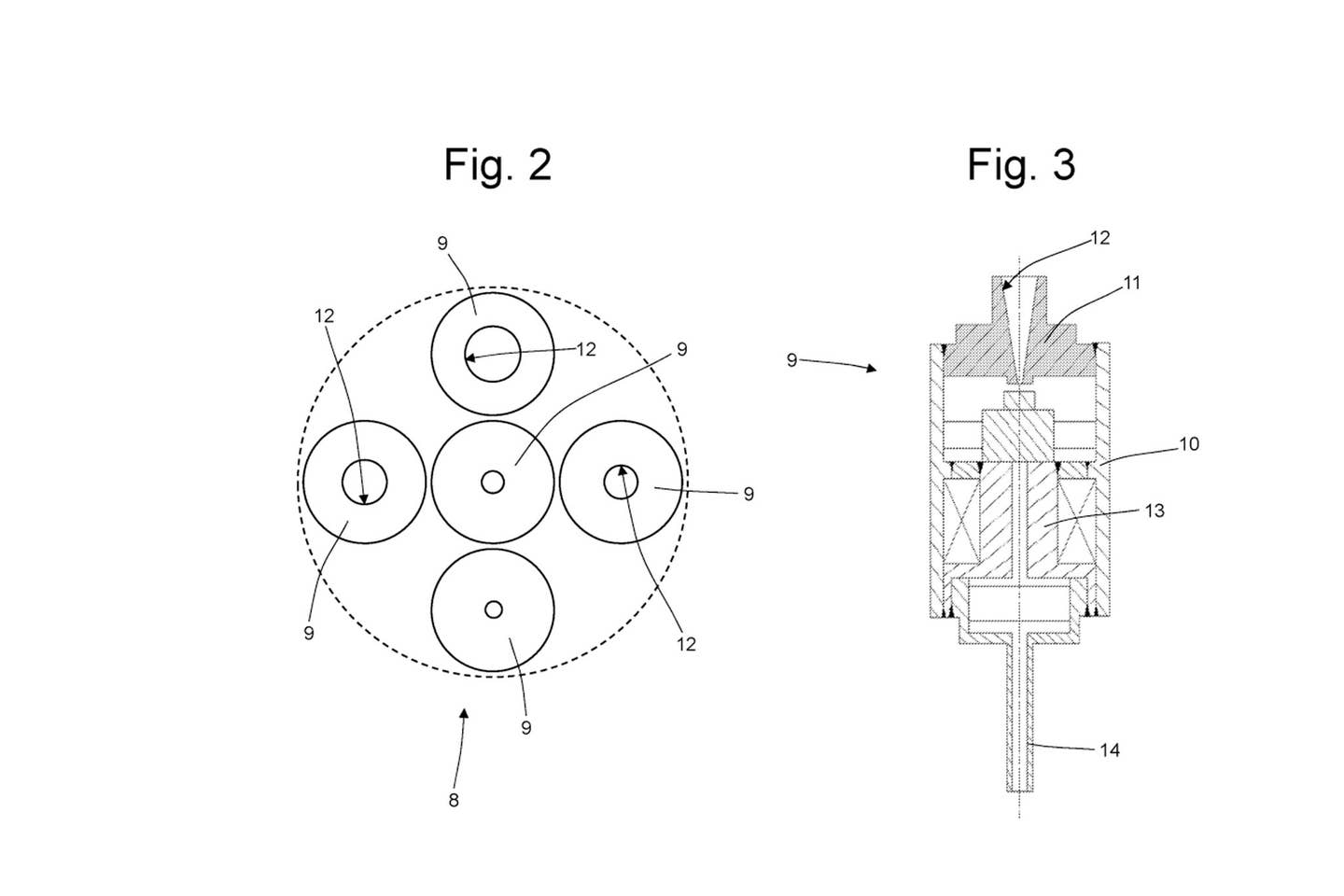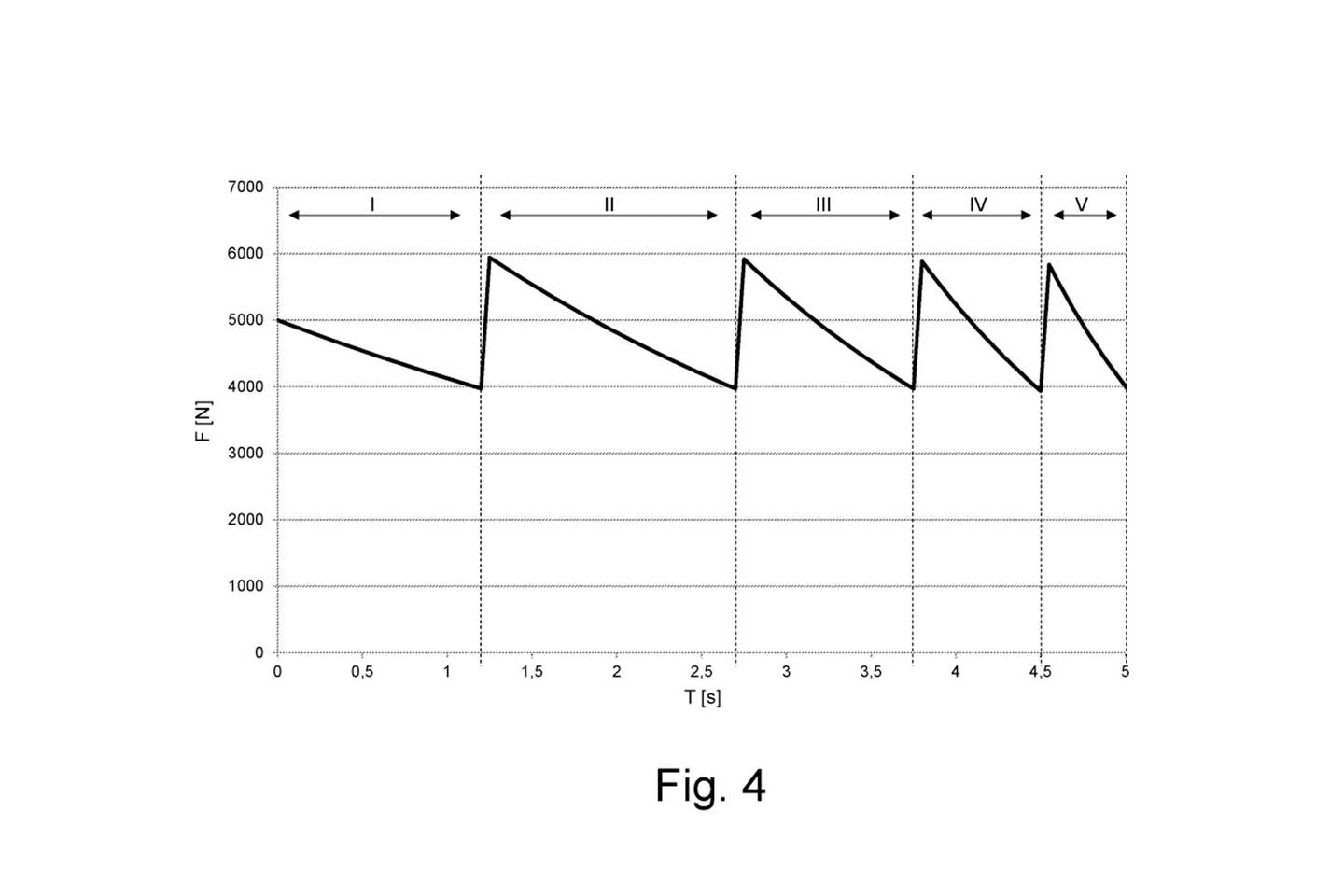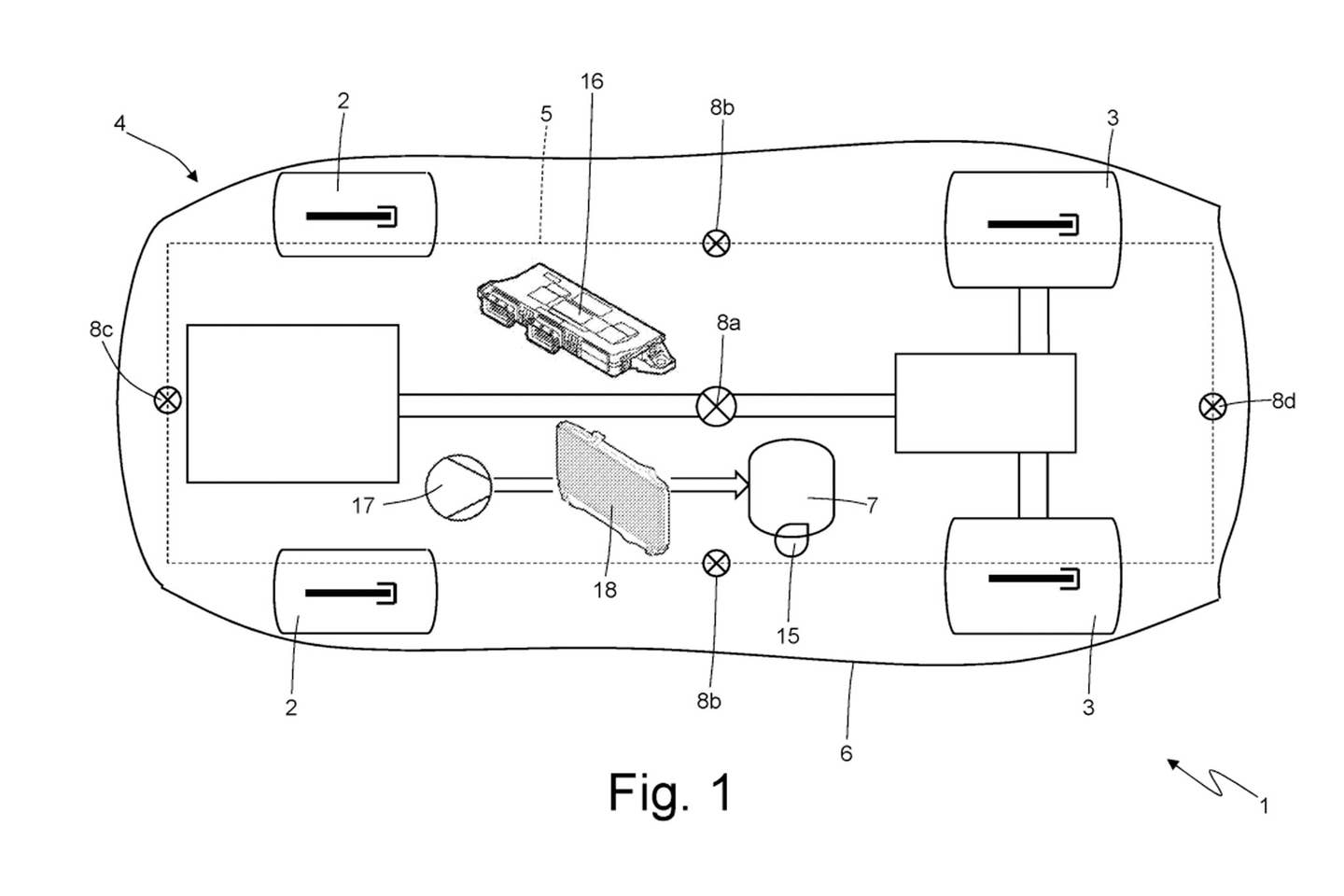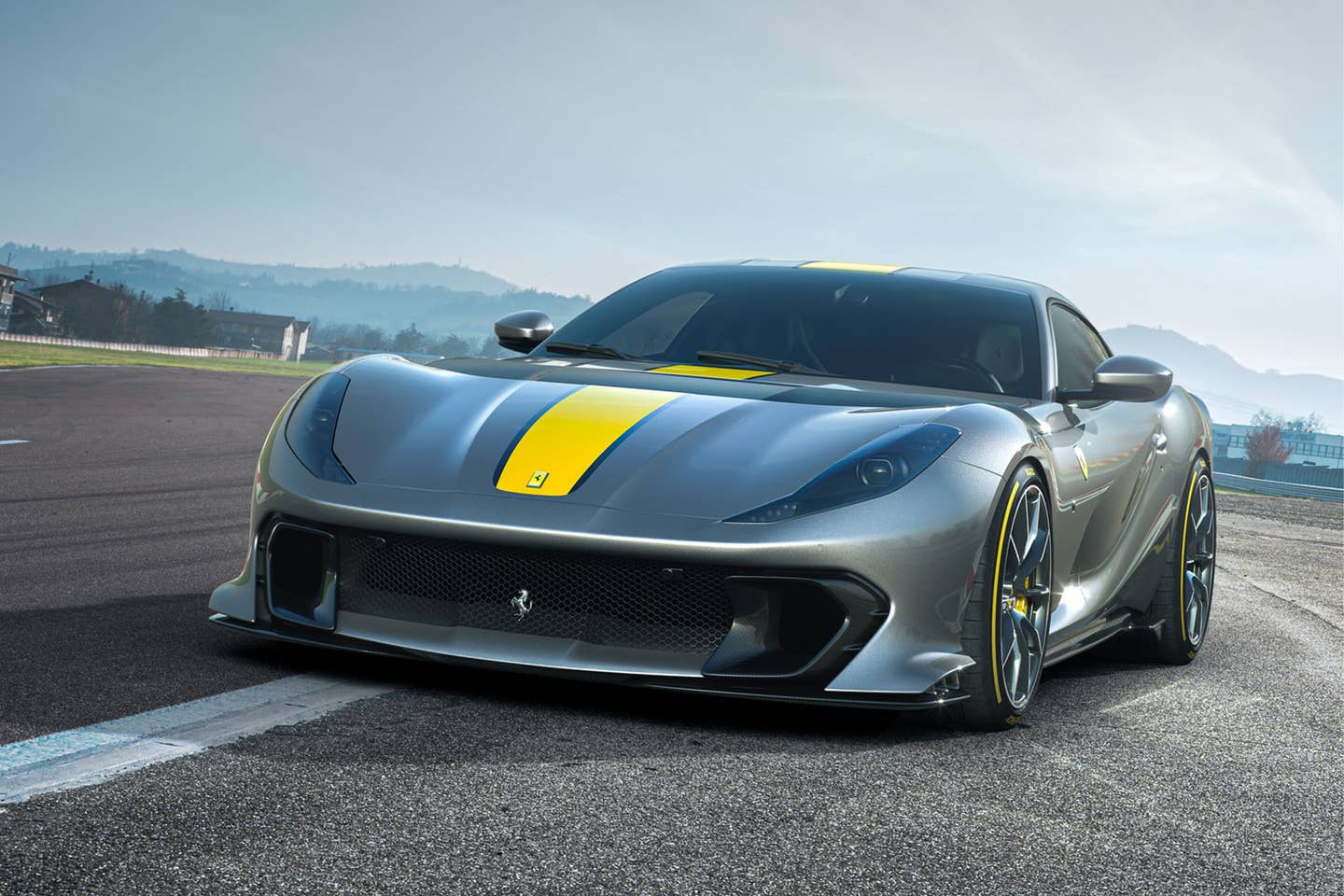Ferrari, just like any reputable supercar producer, is continually seeking methods to extract more efficiency from its vehicles. Whether it involves innovative new suspensions from Multimatic or sophisticated hybrid systems paired with ever more potent turbocharged engines, the Italian car manufacturer possesses an array of tactics at its disposal. A recent patent filing takes an unexpected turn, though. The Maranello brand is exploring gas thrusters.
This concept might ring a bell for Tesla enthusiasts. Elon Musk has discussed a similar setup for the upcoming Tesla Roadster, and Ferrari’s concept aligns closely. While I couldn’t locate a patent related to Tesla’s system explicitly describing something like this, Ferrari’s patent, also filed in late 2019, was recently made public.
As previously elucidated by Jason Fenske at Engineering Explained, integrating gas thrusters to enhance a car’s performance is indeed feasible. Employing compressed air is an effective approach, albeit requiring substantial pressures. Ferrari’s patent indicates a necessity of 700 to 900 bar, equivalent to 10,000 to 13,000 PSI. Constructing a pressure vessel capable of withstanding such immense forces is surprisingly achievable, as evidenced by hydrogen storage tanks in fuel cell vehicles. Nonetheless, Ferrari proposes alternative methods.
This is where things take a curious turn in this patent application.


Ferrari’s design diverges from a conventional compressed air gun. Each thruster location, featuring a “plurality” of outlets, incorporates multiple nozzles. Ferrari’s documentation outlines five nozzles per thruster location, each with progressively expanding orifices. The strategy is to utilize a small orifice when the tank is full and pressure is high to generate the necessary force, estimated at about 5,000 newtons. When the tank pressure decreases, a larger nozzle diameter is employed to maintain a consistent force, albeit for a shorter duration. This implementation enables a continuous thrust over an extended period. Notably, the airflow in this system is supersonic and exceptionally loud.
The entire system, anticipated to introduce a mere “40-45 kg” in weight according to Ferrari’s estimates, surpasses the complexity of Elon Musk’s Twitter discussions. Remember, this is a patent application. The thrusters are not solely intended for enhancing downforce and expediting acceleration and deceleration. While they do serve that purpose, they also promote aerodynamic downforce by channeling substantial air flow between the vehicle’s underside and the ground. This not only propels the vehicle but also generates downforce through the ground effect—the venturi effect—as well. The mechanism resembles a fan car but minus the fan element.

Ferrari
Musk’s proposed system involves utilizing an electric compressor to move air. In contrast, Ferrari’s setup operates differently. One description involves a mechanically linked compressor to the front or rear axle, working in conjunction with a heat exchanger to maintain optimal air density. This configuration enables the compressor to function as a kinetic energy recovery system. The energy generated during braking is used to compress air, which can then be reused to accelerate the vehicle, enhance cornering speeds, and more. Quite unconventional. Alternatively, an external refilling system could be employed, though this might restrict the system’s effectiveness.
Ferrari’s patent application concludes after detailing these aspects, with a mention of a direction less likely for Tesla to explore. Let’s let the patent’s words speak for themselves at this point. “According to a different possible embodiment, the gas pushers do not operate through compressed air… but are pulsejets, which are supplied with a liquid fuel (typically, the same liquid fuel supplying [the] internal combustion heat engine.)” In simpler terms: say no to compressed air, and yes to gasoline-powered pulsejets for generating the required force. Yes, those pulse jets.

A Ferrari 812 Competizione. Ferrari
Verifying the authenticity of this patent, it indeed exists. May the patent be granted to Ferrari.
Contact the writer via email at peter@thedrive.com
